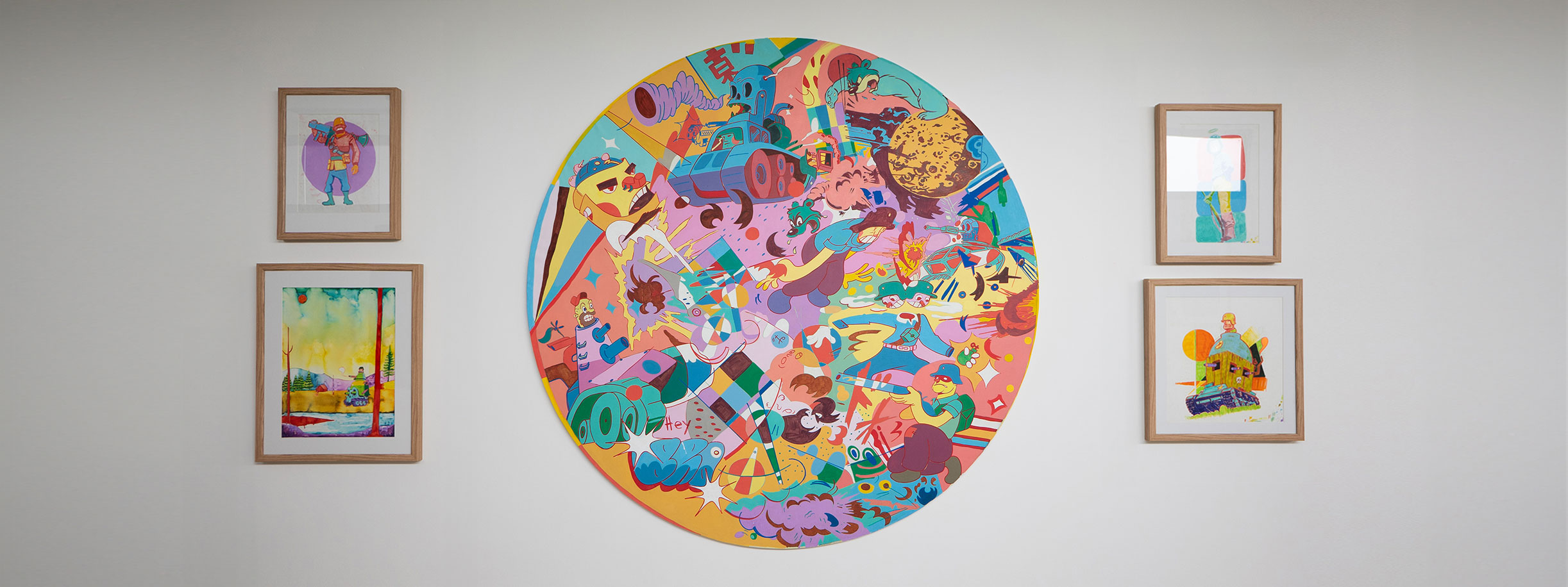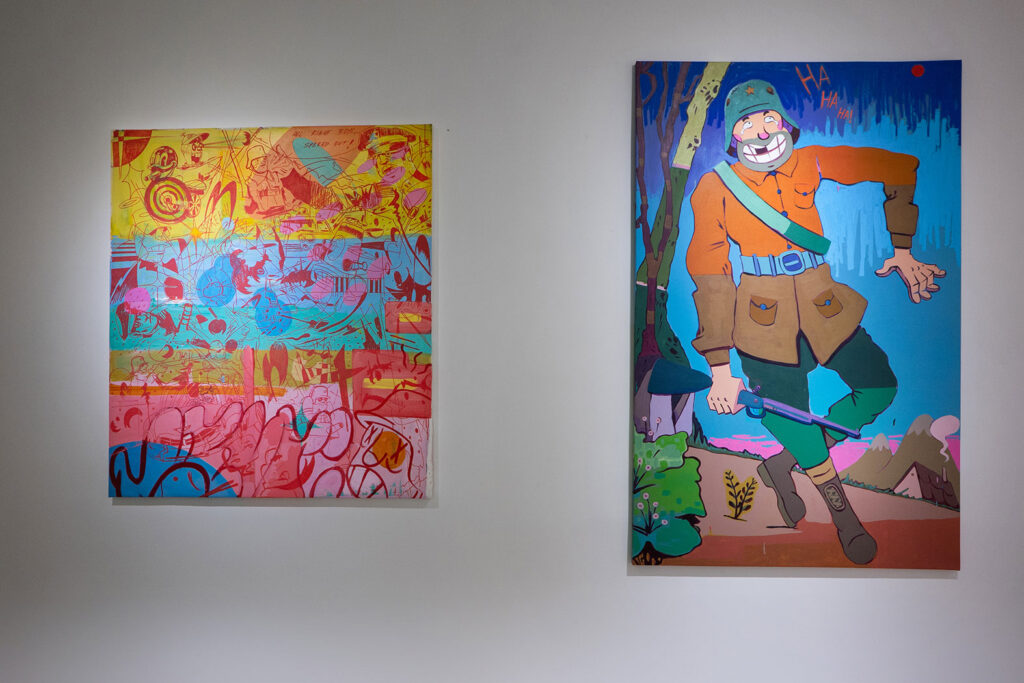Raymundo Valdez "The Ghost Soldier"

There was a moment in history when the arts played a crucial role on the battlefield. The world of the senses was drawn upon, recruiting visual artists, film producers, theater people, sound experts, illusionists, magicians, and others. For the first time, the idea of the battlefield was reformulated as the stage where military strategy would become the ultimate script.
I place myself between these two fabulous paragraphs of history to talk about Raymundo Valdez, an artist who has seen in combat the perfect figure to create a graphic record of what is won in the dohyo, in the streets, in the ring, in the arena, or in space. These were times when Raymundo’s painting was lavishly spent; we could locate his first interest in hand-to-hand combat, with a particular fixation on sumo wrestlers, whom he depicted with exaggerated amounts of paint, almost defeated by weight and gravity, with large slabs of oil paint hanging from the canvases.
That culturally distant dohyo represented for Valdez the beginnings of a combative stance that would later expand in territory and multiply in combatants and weapons. Outside the dohyo, Valdez had an encounter with superhero comics, particularly Batman, Spiderman, Superman, Hulk, and others less prominent. From this encounter arose some intentionally disdainful portraits—Spiderman, for example, is returned to civilization with sharp irony, and a disheveled and almost ruined Peter Parker becomes “Piter Parkinson.”
One doesn’t need to be a great orator when one draws like Valdez; however, he is a great conversationalist. From one of our exchanges, I rescued some important insights for understanding the man behind the work. Valdez is a servant of the Catholic Church and at the same time a devoted practitioner of painting. His pilgrimages may seem not to converge, but if we rewind the reel of history, we find the famous Battle of Lepanto, where Christian sailors joined forces with Pope Pius V to pray the Holy Rosary in a single battle cry, defeating the Turkish forces just like that, with an army armed with acts of faith.
I can imagine soldiers praying, entrusting themselves to a saint, crossing themselves, and tightly holding a photo of a loved one—anything is valid for gaining confidence. I can also imagine Valdez. During a visit to his workshop, I glimpsed some religious images sharing the same battlefield with his paintings.
A ghost army requires many ghost soldiers; here is the first of a series of landings: soldiers in bright uniforms are distributed across the surface, and magenta begins to color Valdez’s skies. A small town in Italy called Magenta comes to mind, where a bloody battle was fought, seemingly with the purpose of naming the color. Far from camouflaging, Valdez’s troops jump into view, his soldiers appearing to wear uniforms designed by none other than the war tailor Hugo Boss. Strategically positioned, some lie flat on the ground, others stand with rifles in hand. Playful legions of tanks advance while the airspace is also taken over by cheerful ships. The troops advance toward their target, and I sense that the objective has something to do with a space not yet governed by Valdez.
The poetic dimension with which these creatives approached war rendered military trenches obsolete. The “ghost army” was born, with over a thousand men playing the roles of soldiers, a legion of inflatable war tanks, paper weapons, sounds simulating troop advances, and many other optical illusions designed to deceive the tyrant. After the war ended, the Ghost Army swore to keep the secret, but it seems that some information has leaked.
– René Ponce







